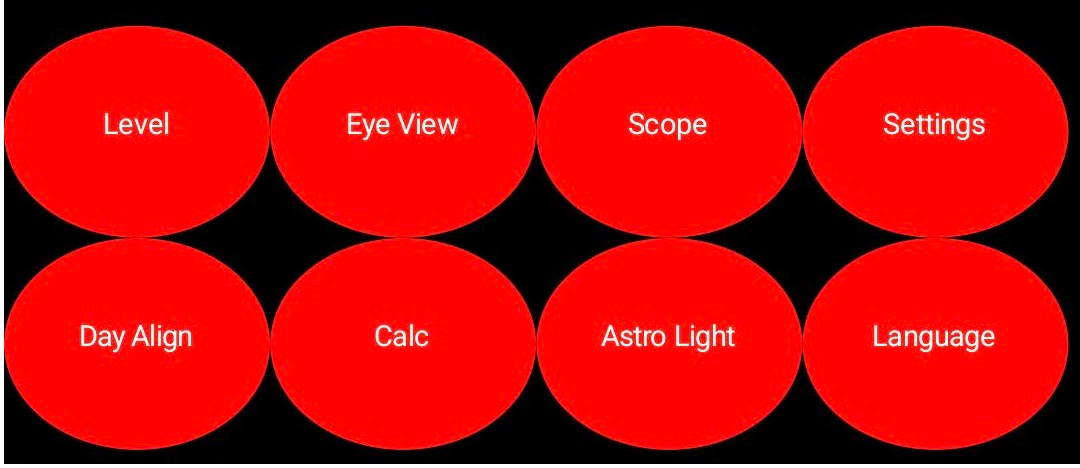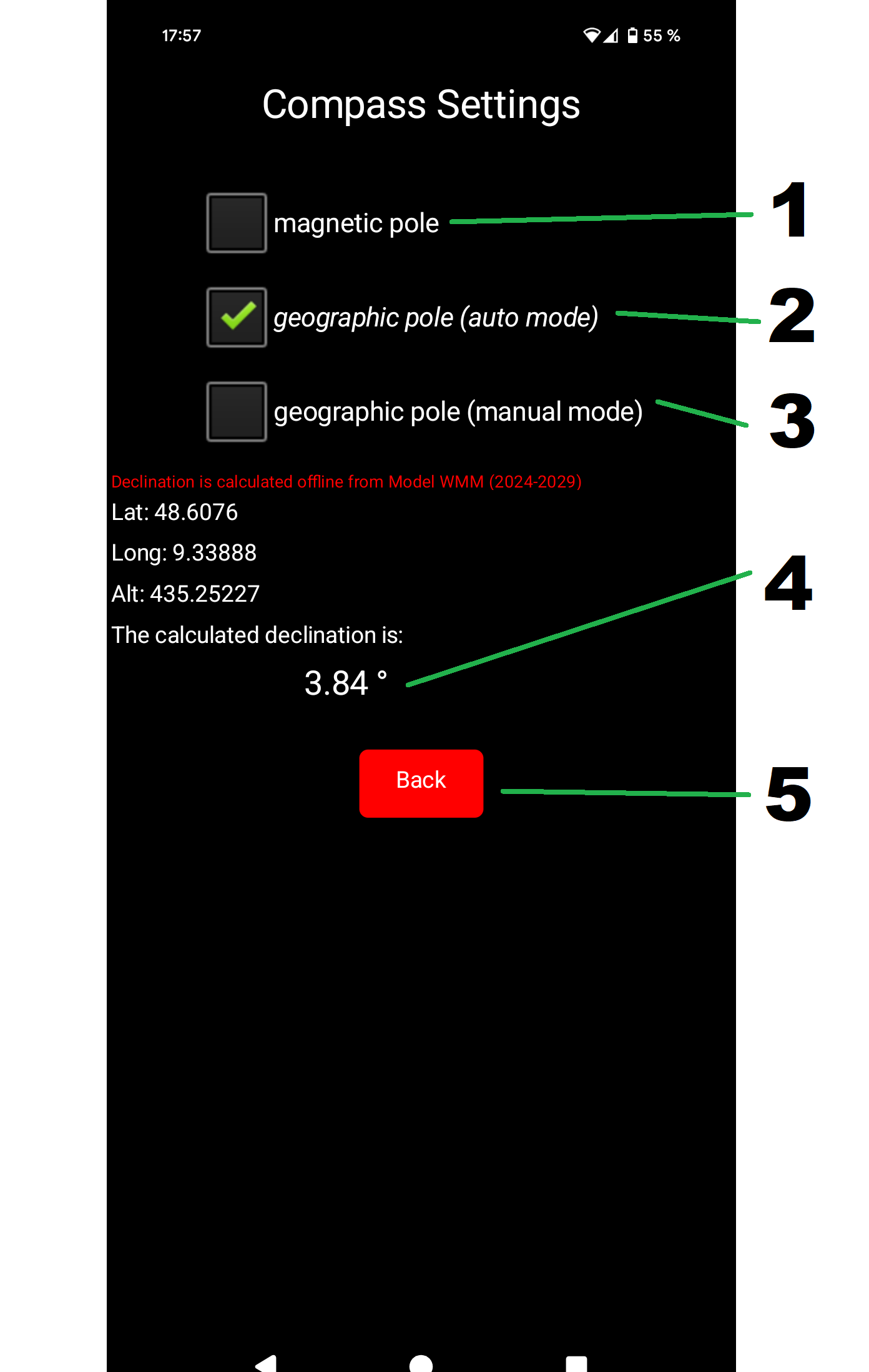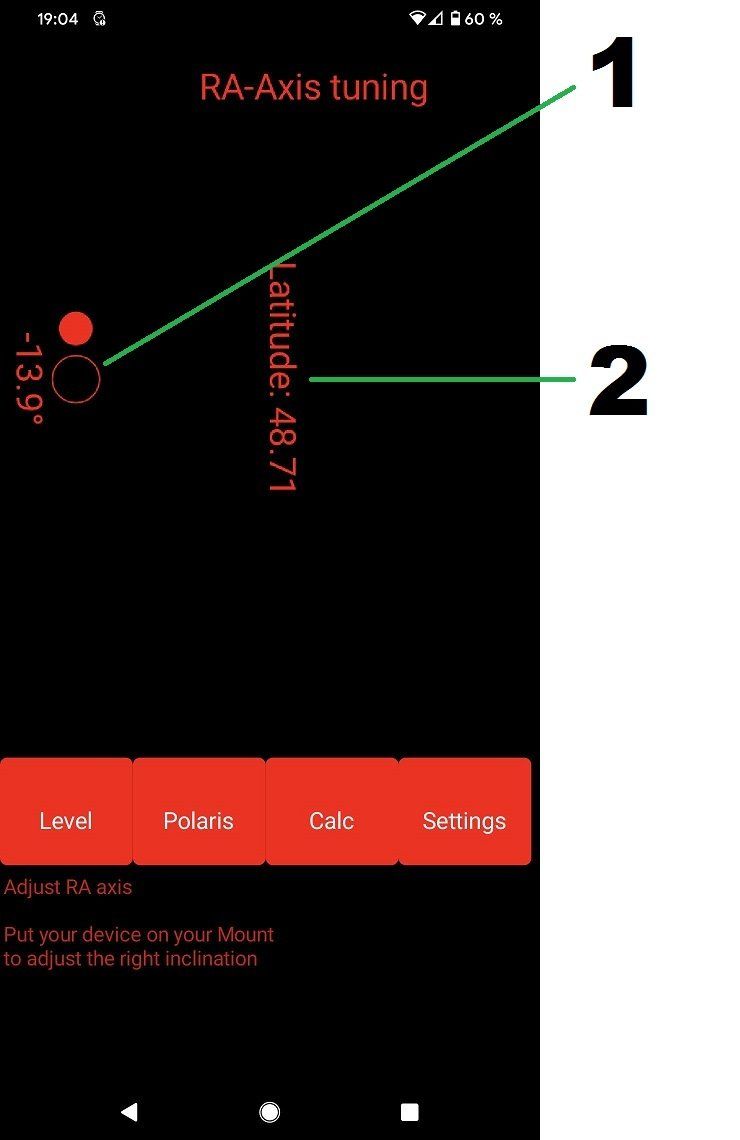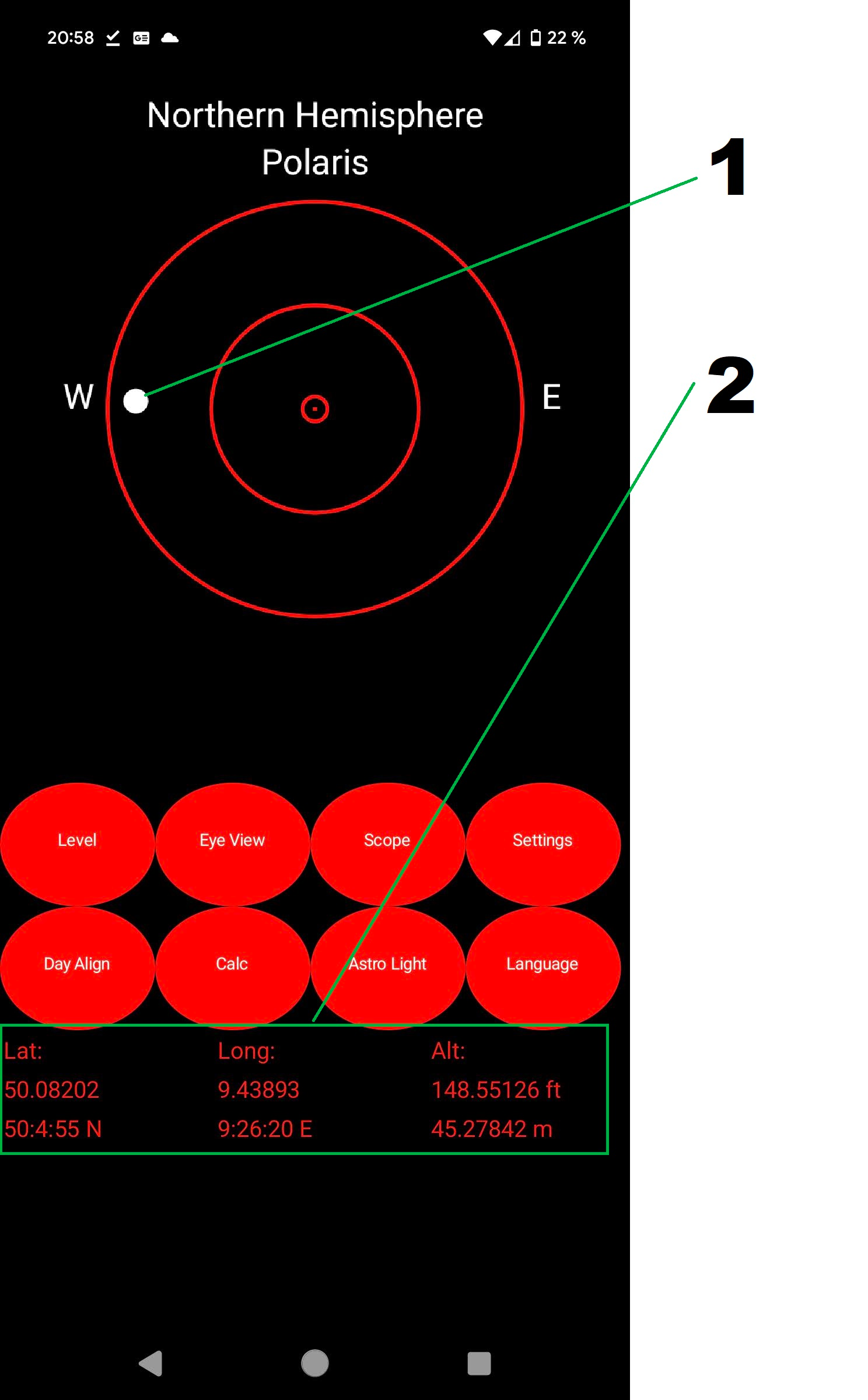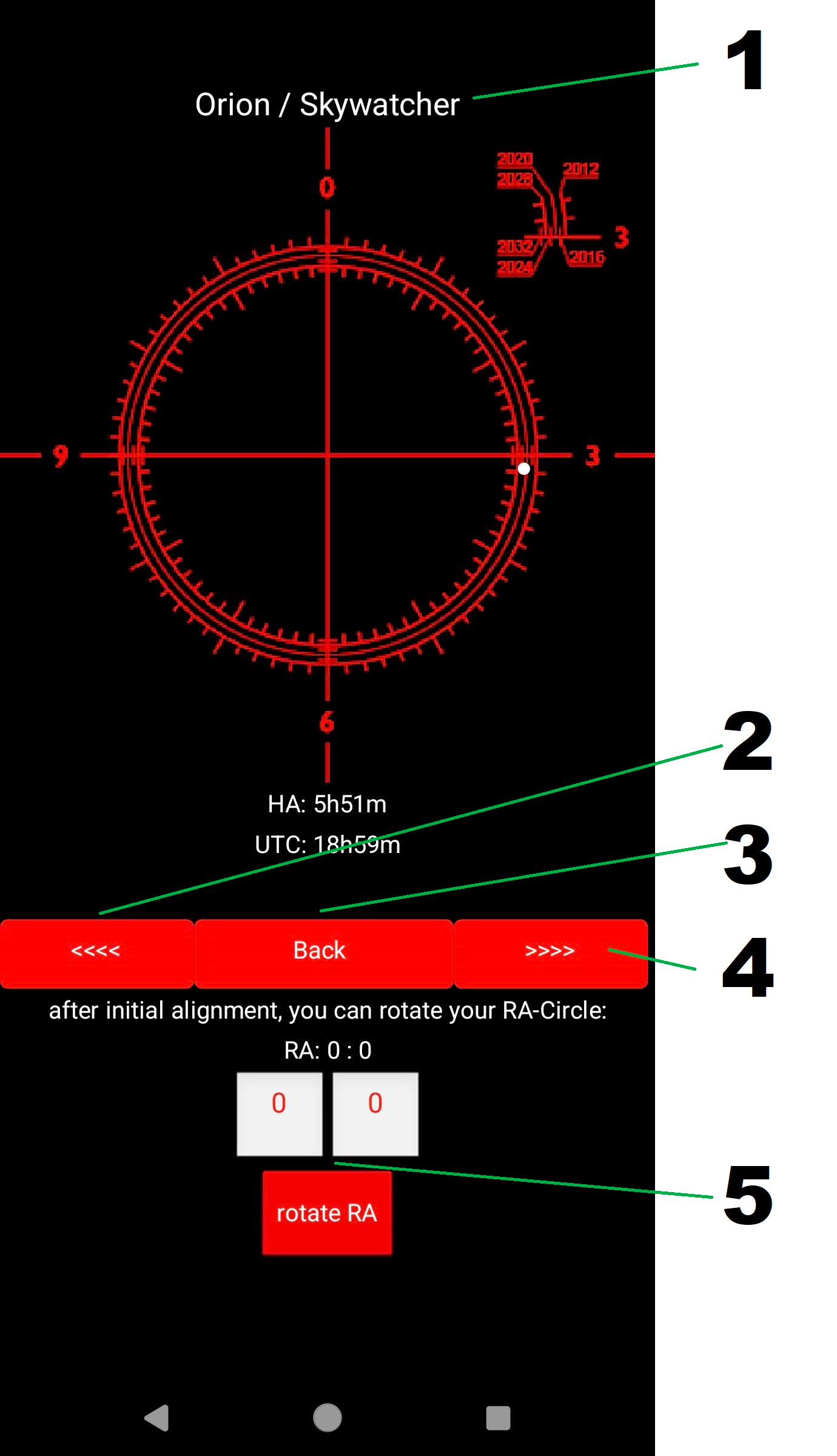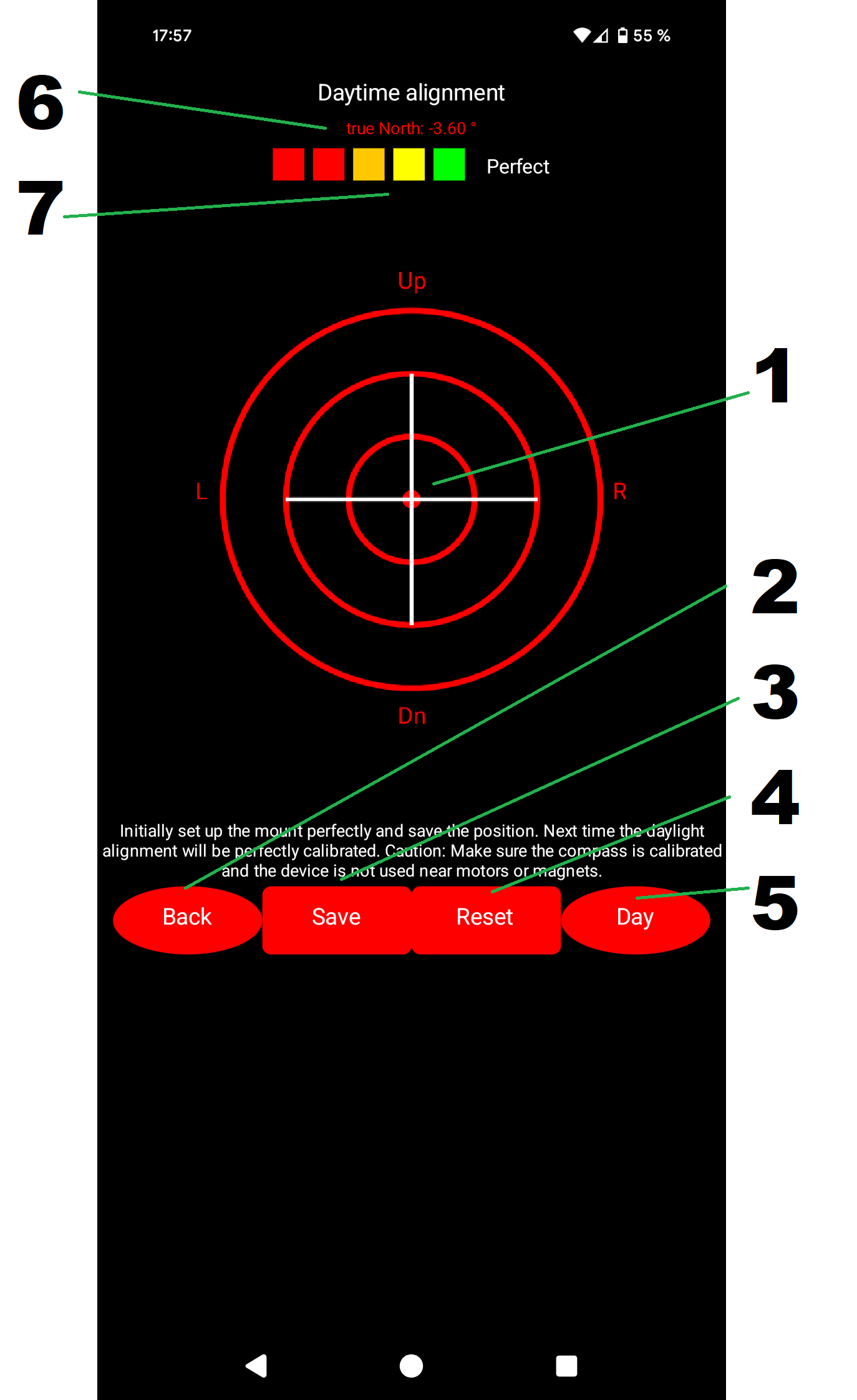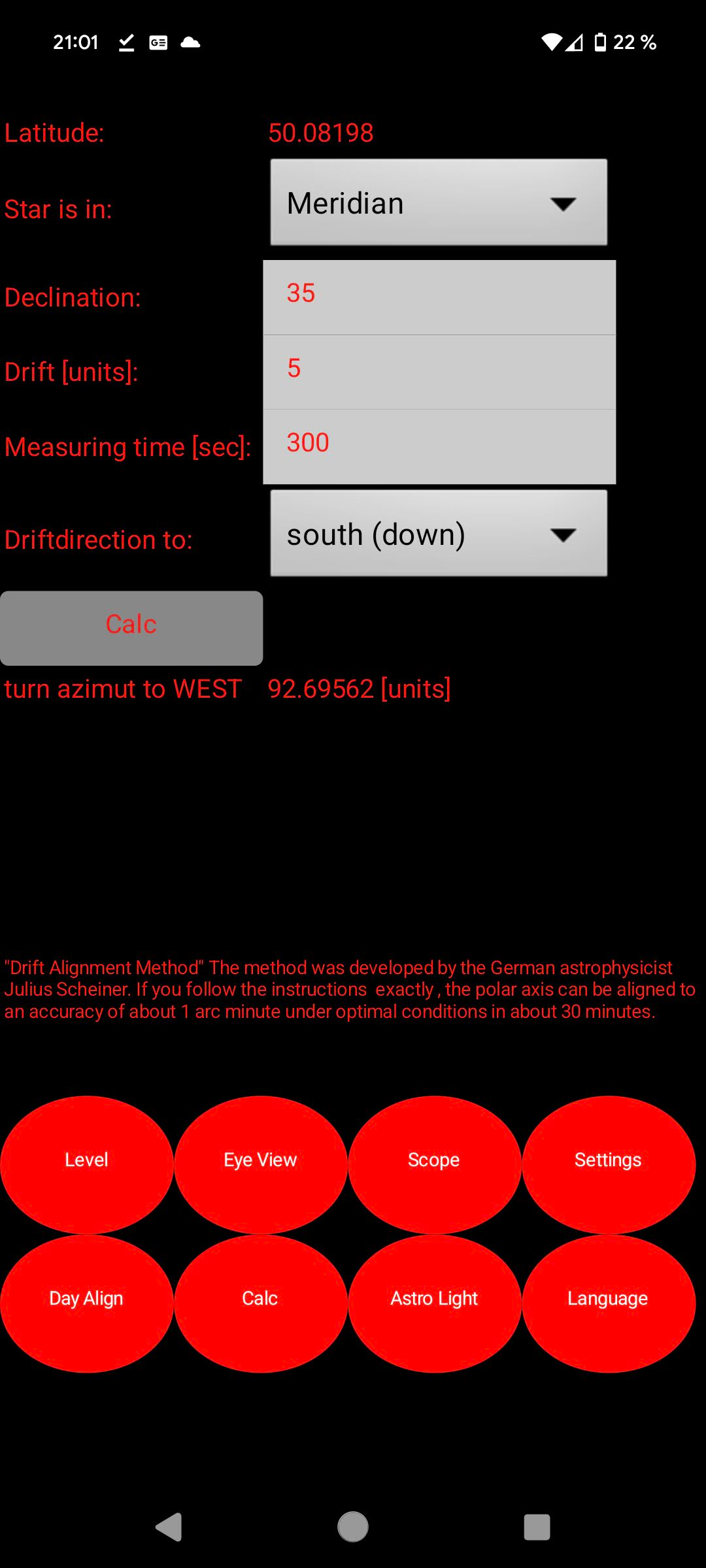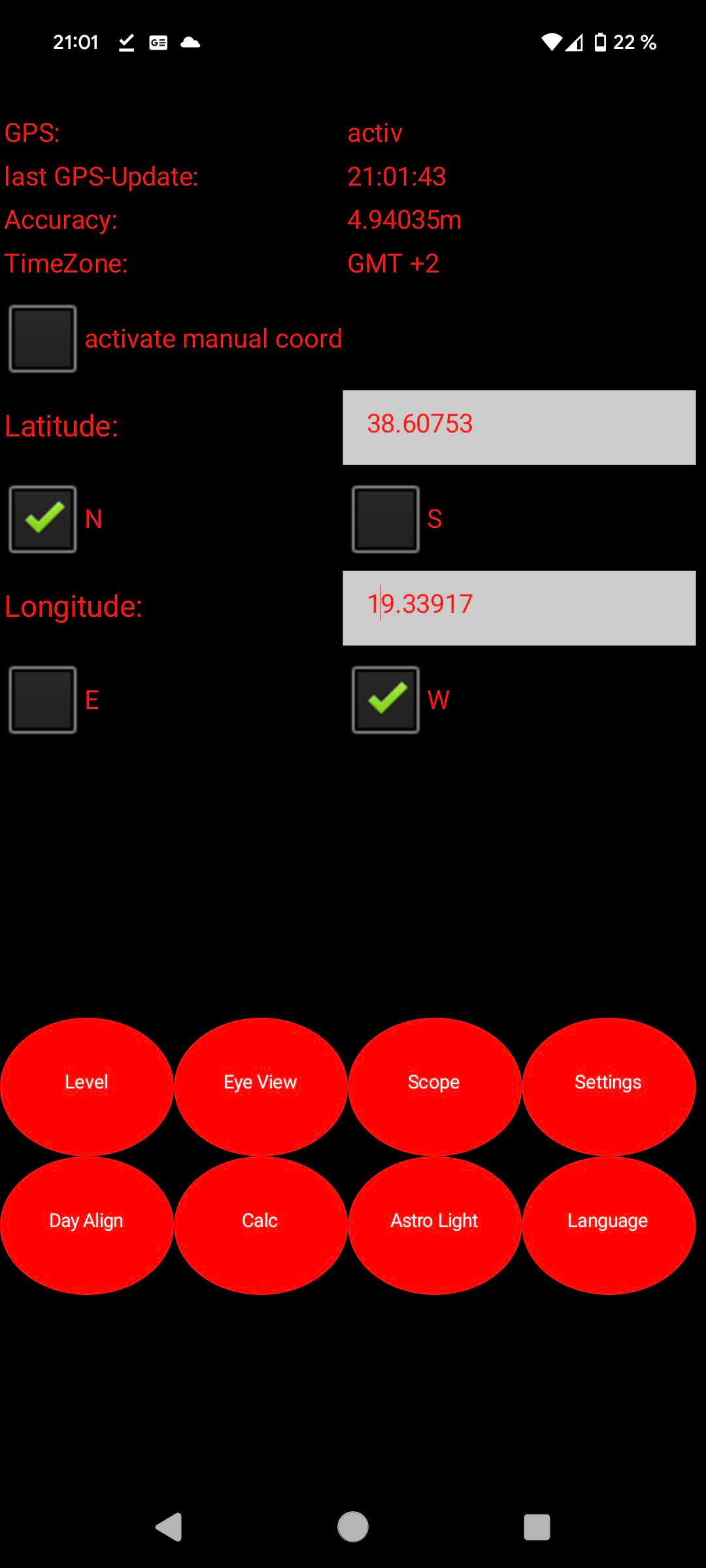Deutsch:
Diese Ansicht zeigt den Scheiner Rechner, auch bekannt als Driftmethode.
Erklärung:
Man stellt zunächst einen Stern im Meridian ins Zentrum eines Fadenkreuzokulars ein. Das Okular wird dabei so gedreht, dass die Fäden genau in Deklinations- bzw. Rektaszensions-Richtung orientiert sind. Nach einiger Zeit wird sich nun der Azimutfehler in einem Abwandern ("Drift") des Sterns auf dem Deklinationsfaden bemerkbar machen. Eine davon unabhängige Drift in Rektaszensionsrichtung wird ignoriert.
Die Größe der Drift in einem festen Zeitintervall (z. B. 300s) ist ein direktes Maß für den Azimutfehler.
Beispiel:
1: Zeigt über GPS den Breitengrad an.
2: Wählt den Stern im Meridian
3. Bestimmt die Deklination des Sterns
4: Misst den Drift nach x Sekunden in Dek (z.b. Pixel auf dem Monitor)
5: Stellt die Zeit ein in dem man den Drift bestimmt hat (z.b. 300s)
6: Bestimmt man die richtung des Driftens vom Stern (z.b. Stern driftet nach unten -> down)
7: Berechnung wird gestartet
8: Ergebnis für die Korrektur in Azimut in der gleichen Scala. (Hat man den Drift in Pixel gemessen muss nun mit der Azimutverstellung diese x Pixel korrigieren)
Danach wiederholt man das Verfahren mit einem Stern im Osten oder Westen und passt die Punkte nochmals an um den Elevationsfehler zu korrigieren.
English:
This view shows the Scheiner calculator, also known as the drift method.
Explanation:
First place a star in the meridian in the center of a crosshair eyepiece. The eyepiece is rotated so that the threads are oriented precisely in the declination or right ascension direction. After some time, the azimuth error will become noticeable in a "drift" of the star on the declination thread. An independent drift in the right ascension direction is ignored.
The size of the drift in a fixed time interval (e.g. 300s) is a direct measure of the azimuth error.
Example:
1: Displays the latitude via GPS.
2: Select the star in the meridian
3. Determines the declination of the star
4: Measures the drift after x seconds in dec (e.g. pixels on the monitor)
5: Sets the time in which the drift was determined (e.g. 300s)
6: Determine the direction of drifting from the star (e.g. star drifts down)
7: Calculation
8: Result for the correction in azimuth in the same scale. (If you have measured the drift in pixels, you now have to correct these x pixels with the azimuth adjustment)
Then repeat the procedure with a star in the east or west and adjust the points again to correct the elevation error.
